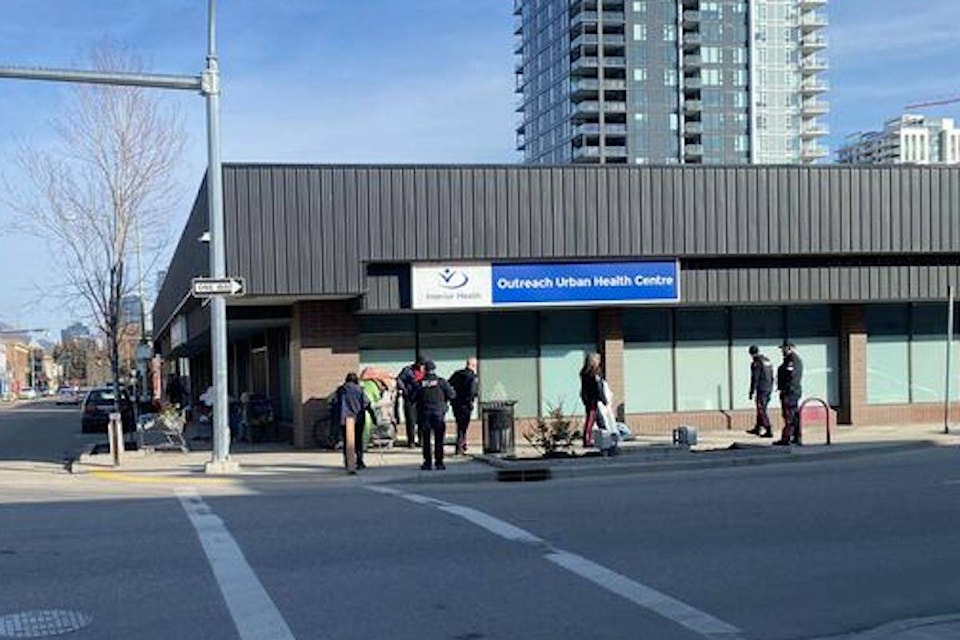As the drug crisis continues across British Columbia, it has accelerated in 2023.
In the first seven months of this year, 253 have died from an overdose across the Southern Interior.
Thursday, Aug. 31 is International Overdose Awareness Day and to bring more of an understanding to the importance of the day, Interior Health’s medical health officer Dr. Carol Fenton has released of The Toxic Drug Crisis in BC’s Southern Interior Region.
“These aren’t just statistics and numbers: these are people we know and love. They are people in our families, people we work with, our neighbours and our friends,” Dr. Fenton stated in the report’s introduction.
The first seven months of 2023 outline that the drug crisis is worsening, with 27 more people dying than during the same time span in 2022.
The data suggests the Southern Interior will also have more total deaths than last year when 397 people died of drug poisonings. B.C. had 2,340 deaths from illicit toxic drugs in 2022.
“Interior Health is committed to acting on recommendations from the medical chart review project, taking action to counteract stigma in health-care settings, designing programs and services with First Nations and Métis partners, increasing access to culturally safe mental health and substance services, and working with community partners on upstream prevention,” said Susan Brown, president and CEO of Interior Health, in a statement.
“We are also committed to revising our strategy to generate a comprehensive suite of effective solutions to the unregulated substance poisoning emergency.”
The report highlights access to services as a barrier faced by substance users.
Thirty six per cent of people’s medical records showed barriers to access from July 2021 to April 2022. That’s nearly triple the same feedback from November 2017 to October 2019 when only 13 per cent of patients cited the issue.
Other issues cited by patients in the report are long appointment wait times, limited hours of operation, lack of phone appointments, and transportation to and from services.
“Although lack of transportation is an issue in both urban and rural places, rural and remote communities are disproportionately affected, particularly First Nations communities relegated to remote areas through colonization.”
People who died from toxic drugs were also likely to have visited an emergency department in the period shortly before their death.
Eighteen per cent of people who died had visited an emergency department within two weeks of dying, while 35 per cent had also made trips to emergency between two weeks to three months prior to death.
Of those people, 21 per cent were visiting the hospital for issues related to wounds or injuries, and about a third of people had at last one visit complaining of pain. But only 16 per cent of people cited issues related to substance use at a hospital in the three months prior to their death.
In their report, IH has a series of recommendations for three groups to help battle the drug crisis.
First, they recommend to everyone to think about the perspective of people who have lived through past experiences.
IH has some ideas that they want to implement as well, including including involving people with past experiences in decision making at all levels in a meaningful way. Also everyone with drug issues are different and have different experiences and because of that, IH is going to continue to educate their staff and equip them to have the knowledge, ability, comfort, and confidence to care plan with each patient. This will also improve the care for people at risk of dying from unregulated substance poisoning.
They also plan to continue working with First Nations and Métis partners, planning the next steps in the drug crisis and recognizing the commitment and engagement required for Indigenous-led work.
IH also recommends the Government of British Columbia increase housing, transportation, and make use data from the BC Coroners Service Death Review Panel report.
READ MORE: West Kelowna wildfire grows despite rainy weather
READ MORE: Show N Shine rescheduled means double feature in downtown Kelowna
@cunninghamjordy
jordy.cunningham@kelownacapnews.com
Like us on Facebook and follow us on Twitter and subscribe to our daily and subscribe to our daily newsletter.



